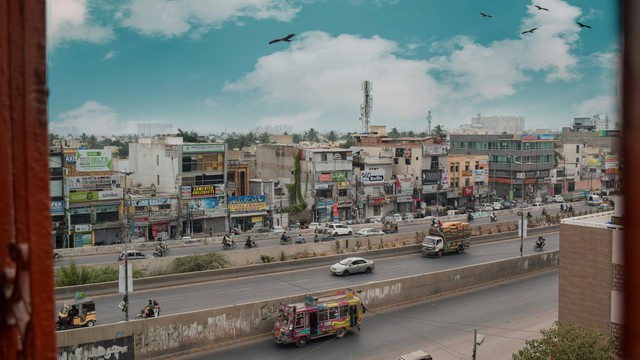Urban planning after crisis: lessons from Southeast Asia
If humanitarian agencies are to help cities recover and rebuild after a crisis, they must work closely with local governments. A new IIED-supported research project will travel to Indonesia and the Philippines to see how it's done.


Families living within the 'No Dwelling Zone' in Guiuan in the Philippines one year after super Typhoon Haiyan (Photo: Copyright Victoria Maynard)
When humanitarian agencies respond to a crisis, they typically target their efforts at individuals or families. But this approach only works partially in cities because what makes people vulnerable in urban areas is both their household status and their reliance on wider-reaching infrastructure and services.
As a result, a growing number of humanitarians have been promoting alternative targeting approaches that intervene at a larger scale. These include approaches targeting:
- Areas, neighbourhoods or settlements – which supports specific areas of the city with a high concentration of needs through multi-sectoral and participatory approaches
- Systems – which supports the rehabilitation of critical infrastructure such as water, sanitation, electricity, roads, transport, communications, healthcare and education, and
- Markets – which supports the recovery of 'foundation markets' by re-establishing supply, distribution and market mechanisms while providing assistance through cash or voucher programmes.
Local government matters
Deciding which targeting approach is the most appropriate depends on a range of factors, from the number of people in need to the type of programme envisaged and the practicality of implementation.
And you don't necessarily have to limit yourself to a single approach: you can combine several depending on your programme. But whichever targeting approach you take, one thing is clear: you need to be able to link your efforts to wider city or regional plans and policies.
That means working with local governments. For them, urban planning in the short and long term is critical – for both responding to immediate needs and reducing the risk of future disasters.
But local governments are all too often constrained by limited resources and capacity. There is also little guidance for urban planners responding to urban crises or for humanitarian agencies trying to provide them with support.
On paper, humanitarians acknowledge the importance of collaborating with local government: the Global Alliance for Urban Crises urges humanitarian agencies to support and work with municipal authorities. But in practice, humanitarians often don't trust local government officials or fear corruption and conflict.
Collaboration in practice
Our research project, funded through IIED's Urban Crises Learning Fund, aims to show how theory can be turned into practice by documenting and comparing two case studies where humanitarians have supported local governments to plan recovery and reconstruction after a major urban crisis.
Our first case study comes from Indonesia, where UN-Habitat undertook urban planning in Meuraxa – one of the worst affected districts in Banda Aceh after the Indian Ocean earthquake and tsunami in 2004. Our second comes from the Philippines, where urban planners from UN-Habitat supported municipal authorities in Tacloban, Ormoc and Guiuan after the 2013 super typhoon Haiyan.
By studying these two cases, we hope to be able to compare and contrast the urban planning strategies adopted in the immediate aftermath of an urban crisis (in the Philippines) with their potential longer-term effects (Indonesia).
Victoria Maynard is completing a PhD at University College London in partnership with Habitat for Humanity. This research is being undertaken by Victoria Maynard (@vcmaynard), Elizabeth Parker (@eparker100), David Garcia (@iamdavidgarcia) and Rahayu Joseph-Paulus (@rahayuyp). Follow them on Twitter to keep up with their research.




